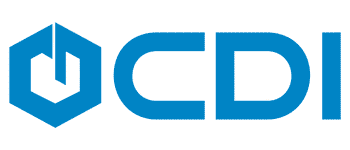Consultant's Corner: Templates & Tokens: Getting the Most Out of Your Metadata
- Apr 24, 2019
- 5 min read
When it comes to Laserfiche metadata, are you taking advantage of all the features available to you? In this month’s issue we sit down with Kyle Knebel, Consultant and Trainer at CDI, to discuss the types, importance, and value that metadata brings to Laserfiche.
Laserfiche metadata consists of several pieces of information that ultimately improves searchability and eases data accessibility within Laserfiche. In this article, Kyle highlights how you can leverage your metadata to improve your system.
What is the importance of metadata in Laserfiche?
Metadata includes, “Fields, tags, Links, and templates” Kyle shares, “they are important tools to identify entries in Laserfiche. This information makes it easy to search for entries. They also provide information to be used by automated workflows that route entries or involve user interaction.”

What is a Field in Laserfiche?
Kyle explains, “Just like a book in a library has a title, it also has an author, publishing dates, a publisher name, a Dewey Decimal Number (a Library filing code), an ISBN number (unique book number), and other information. In this way, you can find books in a library based on many different sorting criteria. Each of these criteria can be thought of as ‘Fields.’ You may have heard of the term ‘Index value,’ which is really the same thing. It is a single piece of information that can be set on an entry in Laserfiche, either on a document or a folder. This field information stays with the entry. Field data makes it easy to find a Laserfiche entry based on that single field value or a combination of field values and text (where appropriate).”
What are Templates and how do you choose what information is on a template?
According to Kyle, “A template is a collection of similar or related fields. You can create a template for any purpose, for example, 'client files' where you track the client name, client email address, client phone number, and advisor name. Or, you could create a template for accounting documents with an invoice number field, purchase order field, check amount, check date, check number, net discount, and other values.”
He tells us, “Laserfiche administrators can create any number of templates in the system, and each template can contain any combination of existing fields. The best practice is to limit the number of templates based on department needs, business processes, or special filing categories. We typically see a maximum of about 30 templates in a given repository. However, the Laserfiche system has no upper limit. It becomes a practical matter for users, rather than a system limitation. If there are too many templates, you could consider applying Template Security so that users only see the templates they need to see/use.”
How do you determine which documents or folders should have metadata such as fields and templates applied?
As we see the value in templates, Kyle explains, “There are two fundamental reasons to use metadata. One is for search, and one is for Laserfiche Workflow automation. Typically, we first consider metadata for document search and retrieval. Secondarily, we consider metadata for routing and business processes via Laserfiche Workflows.”
Why would a person use just fields instead of templates?
Kyle says, “Sometimes a single field may be used because it’s not needed on every single entry and may be unique to that particular entry. For example, you may have a ‘Workflow history’ multi-value field assigned to an entry by Laserfiche Workflow. This way you can set a workflow activity to assign history notes to the text field as to what actions have been completed to the entry.”
Is there a way to quickly determine what metadata or template information is applied to a document?
Kyle describes, “One of the easiest ways to see metadata on an entry, without having to open the Metadata dialog box, is to add columns to the ‘Contents Pane’ in the folder browser. The benefit of adding the columns is that it allows you to see all the information about the documents at once, helping you easily identify missing details. You can also open the document viewer and see the metadata for a particular entry from there, if needed.”

What are tokens?
“Tokens are a placeholder for a value; like a user’s login name, or today’s date, or the parent folder’s name of the current entry. The actual token value is replaced when the entry is saved,” Kyle shares. “They allow fields to be dynamically populated with details. These are popular for use with Workflow; allowing retrieval of information from Laserfiche Forms or a database, for example.”

When should tokens be used?
Kyle suggests, “Tokens are best used when you want to let Laserfiche fill-in field values when naming new documents when scanning or using Snapshot.”
He says, “They are ideal for email imports since Laserfiche provides unique email-specific tokens when using Outlook Import. Email import uses unique message tokens found on emails only. Here’s a sample template using email tokens. This template and the fields need to be created in Laserfiche before you can use it. However, once built, if you apply the template to an email message, its message properties will be filled in on the template.”

How do you determine the proper formatting of a token?
“A token is usually formatted in the pattern: %(Token), for example, %(Date). Kyle describes, “In Laserfiche version 8 or version 9, tokens looked like this: $token$. However, anyone using version 9 and above should be using the newer %(Token) format.”
Can you give some examples of how to use templates and tokens?
A versatile feature, “Tokens can be used in fields as default values in the Laserfiche Client, both Windows and Web, Laserfiche Workflow, Quick Fields and Snapshot,” Kyle shares.

“Tokens can be used when scanning, including Web Scanning.”

“Tokens can be used in Snapshot.“

“They can even be used in Microsoft Office.”

How do you update metadata if information changes and can the updates be automated?
“Once the token is replaced with an actual value because the entry change was saved, the metadata will not change on its own,” says Kyle. “However, you can use Laserfiche Workflow to make updates to the value in a field. Laserfiche Workflow is an automation tool that allows Laserfiche administrators to find entries and run activities against them, such as changing a field value, or applying a template, or even reading the field values to rename the entry.”

Quick search and retrieval of documents, along with consistent naming conventions, or simple report generation, are all benefits of using Laserfiche metadata. The available metadata tools have many possibilities, determine which of them are helpful to you. For help setting up Laserfiche fields, templates, configuring tokens, or finding other ways to use metadata, contact the CDI Consulting Team.




Comments